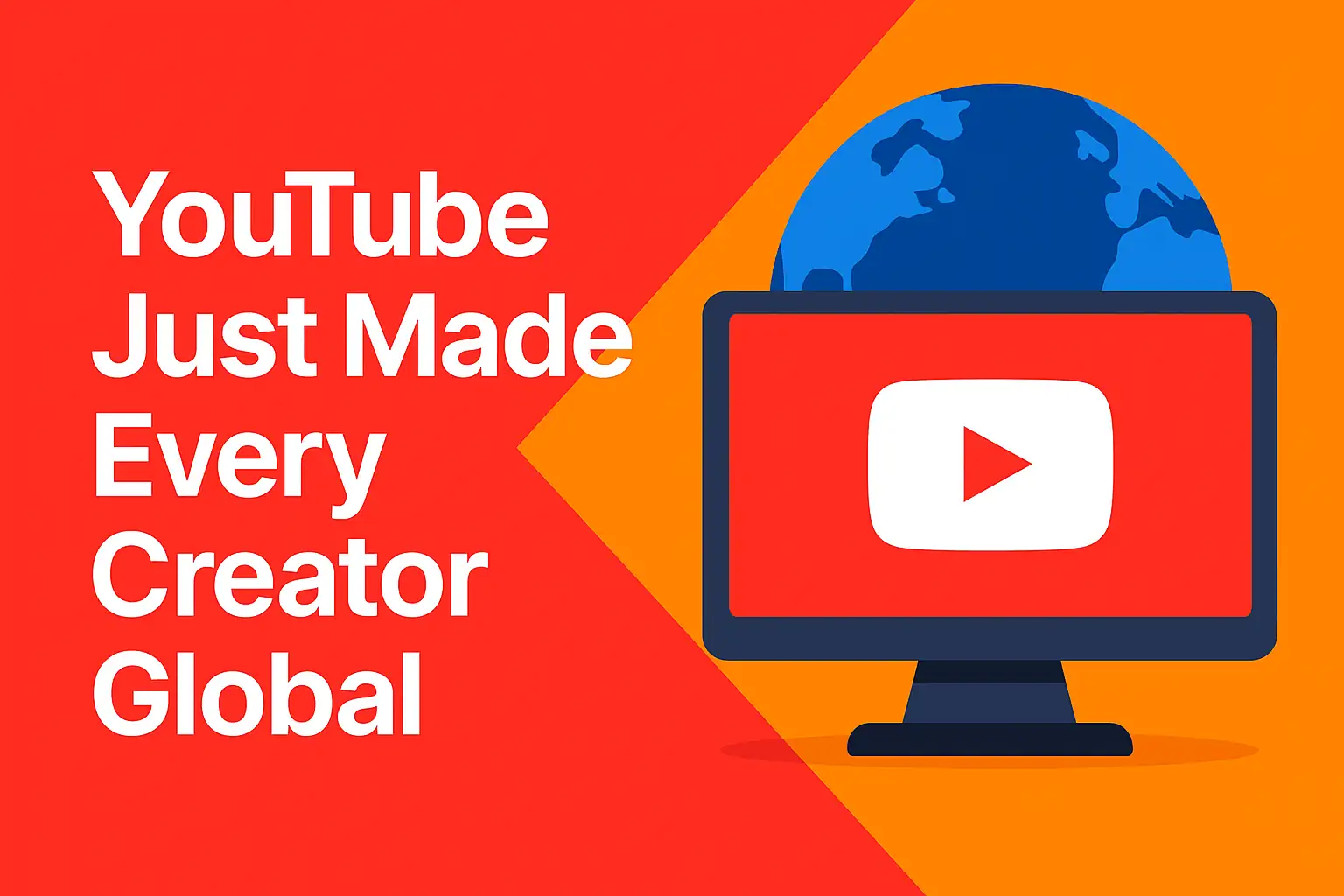
How YouTube’s New AI Lip Sync Makes Videos Instantly Multilingual
- What’s new: YouTube autodubbing with lip sync
- How it works — the basics
- Why this matters for creators and brands
- Best use cases
- Tips to make the most of autodubbing
- Why this signals the future of video
What’s new: YouTube autodubbing with lip sync
YouTube already tested AI-driven translation features before, but this new update goes much further. Autodubbing now combines three innovations:
- Automatic dubbing in multiple languages — Your original video can be translated and dubbed instantly.
- Accurate lip synchronization — Lips move naturally in sync with the new audio track, making the effect much more believable.
- Voice cloning in your own tone — The dubbed version still sounds like you, not a generic voice actor or robotic narrator.
The result is a viewing experience that feels authentic and natural, even across different languages. For global audiences, it’s like you actually recorded the video just for them.
How it works — the basics
The technology behind YouTube autodubbing relies on advances in speech synthesis, lip sync modeling, and voice cloning. Here’s what happens under the hood:
- Speech recognition: AI transcribes your original video into text.
- Translation: The text is automatically translated into the target language, keeping context and nuance intact.
- Voice generation: A cloned model of your voice reads out the translated text in the new language.
- Lip sync: AI analyzes your lip movements in the video and remaps them to fit the translated audio track.
This creates a seamless illusion that you are speaking directly in another language. Compared to earlier dubbing or subtitle tools, this is a huge leap in immersion.
Why this matters for creators and brands
For years, the biggest challenge in global video distribution has been language barriers. Subtitles are helpful, but they break immersion. Traditional dubbing is expensive and rarely captures the creator’s own style. Now, autodubbing solves these problems at once:
- Global reach, minimal effort: A single video can speak to audiences worldwide without additional shoots.
- Authenticity preserved: Because it’s still your voice, audiences feel like they’re connecting with you — not a translator.
- Higher engagement: Viewers are more likely to watch and share when lip sync makes the experience believable.
- Lower costs: No need for voice actors, studios, or post-production teams.
In short: autodubbing democratizes global reach. Small creators now have access to the kind of localization power that only big media companies could afford before.
Best use cases
This feature has countless applications across industries. Here are some of the most powerful:
- YouTubers & influencers: Translate Shorts or long-form content into multiple languages to unlock new subscriber bases.
- Brands & marketers: Launch ad campaigns in local languages without hiring entire dubbing teams.
- Educators: Deliver courses, tutorials, or lectures in different languages, expanding accessibility worldwide.
- Entertainment: Music videos, comedy sketches, or dramas can instantly reach fans outside their original market.
- Non-profits & NGOs: Share important messages, campaigns, or fundraising videos across regions with cultural sensitivity intact.
Imagine: a Dutch creator uploads a fitness tutorial. Within days, the same video is available in Spanish, Hindi, and Arabic, perfectly dubbed and lip synced. The potential reach multiplies overnight.
Tips to make the most of autodubbing
Like any AI tool, the results depend on how you use it. Here’s how to maximize the impact of YouTube’s autodubbing:
- Choose the right languages: Focus on markets where your niche is growing fast or under-served by creators.
- Keep sentences clear: AI handles translations better when the original phrasing is simple and structured.
- Fact-check translations: Always review important details like names, technical terms, or brand slogans for accuracy.
- Optimize metadata: Translate titles, descriptions, and hashtags as well — not just the video audio.
- Engage with local communities: Reply to comments in different languages (using AI if needed) to build trust with new audiences.
By combining autodubbing with thoughtful localization, you ensure your videos don’t just reach global viewers — they resonate with them.
Why this signals the future of video
This feature is more than just a convenience. It’s a sign of where content creation is headed:
- Personalized voices: Soon, creators may offer personalized voice packs, where fans can choose the language or even tone.
- Cross-platform integration: Expect autodubbed videos to flow into TikTok, Instagram, and other platforms for maximum reach.
- New business models: Subscription tiers could include multilingual content as a premium feature.
- AI-native storytelling: Entire shows, films, or educational programs may be produced once — and launched globally in every language simultaneously.
The bigger picture? AI breaks down language barriers once and for all. Where subtitles and dubbing were imperfect solutions, autodubbing with lip sync feels like a natural bridge. In just a few years, viewers may expect every video to be instantly available in their preferred language — and creators who adopt early will be the ones to benefit most.
So, is this a gamechanger for YouTube? Absolutely. For creators, it’s the difference between speaking to hundreds or millions. For brands, it’s a chance to scale campaigns globally without scaling budgets. And for audiences, it’s a chance to experience authentic content — in their own language, from the people they want to hear.
Get ready: the era of global-first video has just begun.